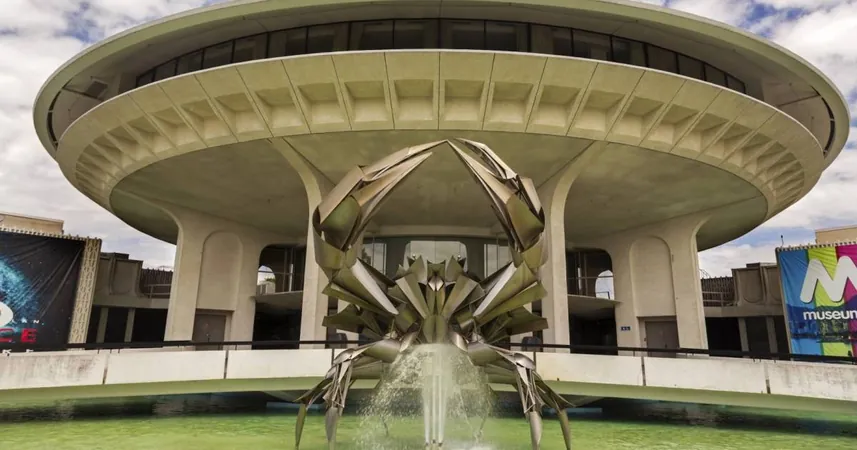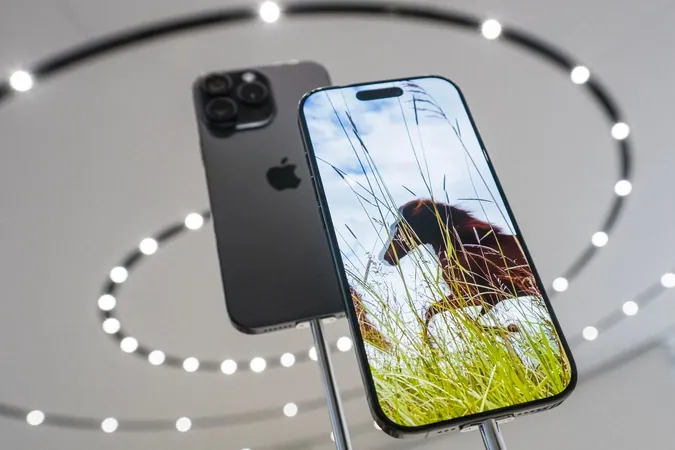
Revolutionary Acoustic Waves Technology Transforms 3D Bioprinting at the University of Melbourne
2024-11-08
Author: Emily
Groundbreaking Development in Tissue Engineering
In a groundbreaking development that could redefine the landscape of tissue engineering, researchers at the University of Melbourne have unveiled a cutting-edge 3D bioprinting method known as Dynamic Interface Printing (DIP). Spearheaded by biomedical engineer David Collins at the Collins BioMicrosystems Laboratory, this innovative technique leverages acoustic waves to swiftly arrange cells into intricate structures, significantly speeding up the bioprinting process and overcoming long-standing limitations associated with traditional methods.
Speed and Efficiency of Dynamic Interface Printing
Traditionally, bioprinters operate on a layer-by-layer principle, which can take considerable time and may jeopardize cell viability due to extended exposure. In stark contrast, DIP is able to fabricate complex human tissues in seconds, achieving print speeds that are approximately 350 times faster than those of its predecessors. This rapid production not only enhances structural accuracy but also minimizes the risk of damaging delicate cell cultures.
Innovative Manipulation of Cells through Acoustic Waves
Collins elaborates on the efficacy of DIP, stating, “Current 3D bioprinters rely heavily on natural alignment of cells, which restricts performance. Our technique employs sound waves to manipulate microscopic bubbles, guiding cells to their exact locations while mitigating risks often associated with conventional methods.” The outcome? Tissue structures can be printed directly onto lab plates, circumventing the usually delicate and challenging transfer process.
Versatility and Material Compatibility
The advantages of Dynamic Interface Printing go beyond mere speed. This technique is designed to accommodate opaque materials and works seamlessly with a variety of biomaterials, eliminating the need for complex optical systems and thus further preserving cell viability. This versatility not only improves the integrity of manufactured tissues but also opens doors for scalable applications in both research and clinical settings.
Unique Biofabrication Capabilities
Moreover, the DIP technology introduces unique biofabrication capabilities, enabling the creation of complex multi-material structures. Through the manipulation of hydrodynamic environments via acoustic waves, researchers can achieve precise 3D particle patterning, revolutionizing cell-laden construct assembly. This level of detail enhances the potential of bioprinting in various fields, transforming tissue engineering as we know it.
Future Advancements in Bioprinting
Looking to the future, researchers at the Collins BioMicrosystems Laboratory are already pursuing advancements in the platform. Enhancements such as improved acoustic field control could eventually allow medical facilities to bioprint hundreds of patient-specific tissue models from an individual’s own cells. This could dramatically advance personalized medicine, enabling tailored diagnostics, drug testing, and regenerative therapies unlike anything seen before.
Innovations Beyond DIP
The advances in bioprinting don’t stop with DIP. Innovations such as Ronawk’s Bio-Blocks, designed to simulate natural cellular environments, and BIO INX’s collaboration with Readily3D for precision volumetric printing show a promising trend towards enhancing tissue fabrication techniques. These systems prioritize cell viability and intricate biological modeling, further emphasizing the push for developments that mirror the complex architecture of human tissues.
Conclusion: The Future of Bioprinting
The revolution in bioprinting is unfolding rapidly, and with it, endless possibilities that could enhance treatment options and foster breakthroughs in medical science. What will the future hold for this exciting field? Stay tuned, as scientists continue to push the boundaries of what’s possible with 3D bioprinting!









 Brasil (PT)
Brasil (PT)
 Canada (EN)
Canada (EN)
 Chile (ES)
Chile (ES)
 España (ES)
España (ES)
 France (FR)
France (FR)
 Hong Kong (EN)
Hong Kong (EN)
 Italia (IT)
Italia (IT)
 日本 (JA)
日本 (JA)
 Magyarország (HU)
Magyarország (HU)
 Norge (NO)
Norge (NO)
 Polska (PL)
Polska (PL)
 Schweiz (DE)
Schweiz (DE)
 Singapore (EN)
Singapore (EN)
 Sverige (SV)
Sverige (SV)
 Suomi (FI)
Suomi (FI)
 Türkiye (TR)
Türkiye (TR)